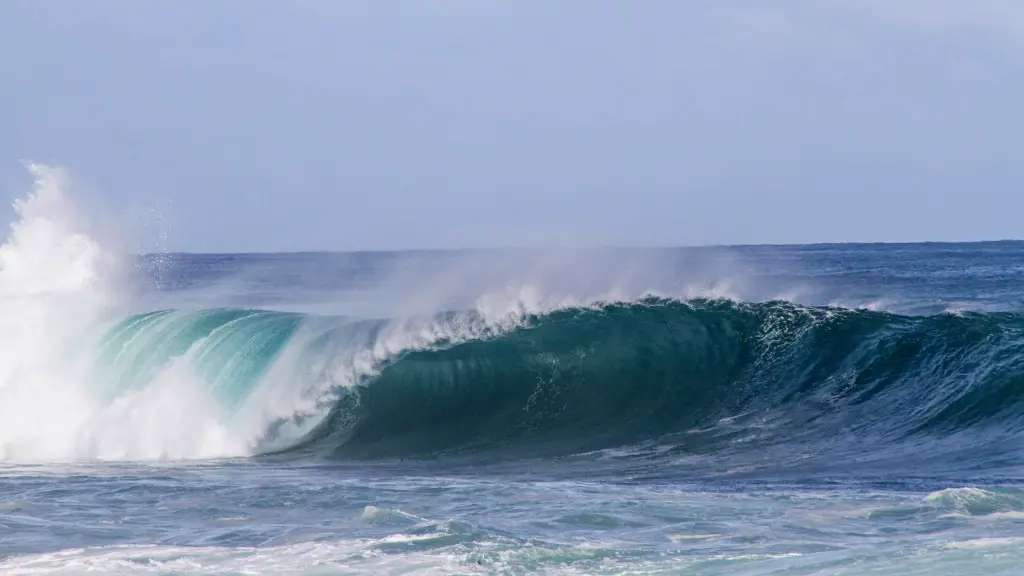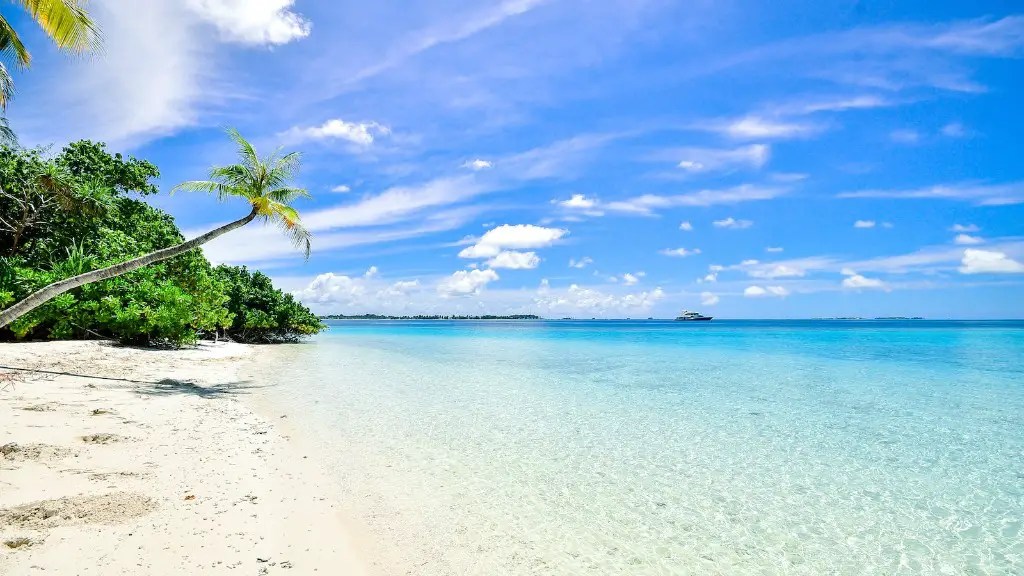The South China Sea is an area of dispute between several countries, each claiming exclusive resources beneath its surface.The main contention is between China and its neighbors, with China claiming sovereignty of almost all of these resources as a part of its ‘Nine-Dash Line’. In recent years, China has begun to militarize the region, including the use of artificial islands and creation of large military bases. This has given rise to questions over the legality of their claims and the implications for the region and the world.
The South China Sea rises in importance with each passing year as an artery of global trade. The sheer tonnage of useful resources in the form of fish, mineral deposits and potential oil and gas reserves is an attractive prospect for its claimants. Even more attractive, perhaps, is the prospect of control over these resources and the promise of economic and military power in the process.
China’s campaign to militarize the South China Sea began in earnest in 2014. Their strategy has been twofold; first to secure the resources beneath it and secondly, to lay the ground for an international dispute over their claims. They have deployed islands, military bases and surveillance systems such as radar, buoys, sonar and even networks of communication facilities to solidify their authority in the region.
China’s stance continues to be met with resistance from its neighbours, who have all challenged Beijing’s claims in the past. The United States, too, has voiced its disapproval, pledging its support to these states and leading to a tense stand-off between the two superpowers. The situation escalated in June 2020 when US and Chinese forces came face to face in the region.
The implications of China’s militarization of the South China Sea are wide reaching. Firstly, it affects the region’s resources and it’s stability as a whole; fishing communities and marine life alike face disruption, and as Milena Sterio of the University of Cleveland observes, the ‘freedom of navigation and overflight’ is also threatened.
The situation has also resulted in calls for a stronger response from the international community. Experts maintain the only way to resolve this dispute is through dialogue, urging all parties to focus on a peacefully negotiated solution. But the problem is further complicated by the US, which has often responded provocatively to China’s moves, thus raising tensions.
Beyond the economic and military implications, the militarisation of the South China Sea also serves as an example of the lengths to which states will go to secure their interests. As Ian Storey, Senior Fellow at the Institute of South East Asian Studies notes, it ‘underscores the importance of strategic geography and the control of resources to great powers’.
The militarizing of the region has become a rallying cry for China’s rising power, as well as a source of contention between its neighbours and the US. But it serves as a reminder of the geopolitical stakes at play, not just in the South China Sea, but across the globe.
The Complex Nature of the Dispute
The South China Sea dispute is complex, with both regional and international dimensions. On one hand, it represents a struggle over territory and resources between China and its neighbours, particularly the Philippines, Vietnam, Brunei and Malaysia. On the other, it is underpinned by an increasingly conspicuous rivalry between China and the US.
At the heart of this dispute are competing claims over the Nine-Dash Line, which was declared by the Republic of China in 1947. This sweeping line of roughly four million square kilometres is the subject of multiple overlapping claims, and its existence has been the biggest source of tension in the region for decades.
China’s militarisation of the South China Sea in the past decade has greatly complicated these disputes. It has allowed China to gain a foothold in the region and embolden its expansive claims that have been widely rejected by its neighbours and the international community.
The regional dimension of this dispute becomes clearer when you consider the various countries involved. The Philippines, a country with a history of fighting for its rights in the South China Sea, has been the most vocal in rejecting China’s claims, and has taken the issue to the UN tribunal.
Vietnam also has a history of conflict in the disputed waters, but its relationship with China has changed since its communist revolution in 1975. The two countries have largely maintained a neutral stance, although there have been numerous clashes between the two sides.
Brunei, another claimant in the region, has thus far maintained a hands-off approach, in contrast to the Philippines. Malaysia and Taiwan, the two remaining claimants, have been largely inactive in the dispute, preferring instead to look for diplomatic solutions.
Global Implications
The militarisation of the South China Sea also has implications for the world. It is widely accepted that the area will continue to be a major part of international trade in the future, with the million-square-kilometres potentially containing huge deposits of oil and gas.
Those deposits, many experts believe, would have an important influence on the world’s economy. As the world struggles to meet its energy needs, the competition to gain access to this energy can be seen as a major factor in the disputes surrounding the region.
With the US trying to curb China’s growing influence in the region, a further factor in the dispute is the desire to establish itself as a counter-balance to China’s military might. The US is playing a mediating role, backing its allies in the region and warning that any attempts by China to further militarize the South China Sea will be met with resistance.
So far, international efforts to contain the tensions between the countries have been limited. Talks between the various claimants has resulted in agreements such as the 2002 Declaration on Conduct, but beyond this, there has been little progress in resolving the dispute.
The militarization of the sea, combined with external influences such as the US, has made the situation even more complex. Without a peaceful resolution to the dispute, it remains unclear how long this region will remain militarized.
The Impact on Local Communities
The militarization of the South China Sea has had a direct impact on the people living in the affected regions, especially those whose livelihoods are dependent on the sea.
Local fishermen in the Philippines have reported harassment and confiscated fishing licences by Chinese forces. They have also seen their catches reduced due to restrictions on fishing in the area. Large commercial vessels, too, have been at the receiving end of Chinese aggression and have had to alter their course to avoid confrontations.
The people of the South China Sea, who are primarily fishermen and traders reliant on the sea, are finding it increasingly difficult to make a living under the militarization of the region. As fishing fleets from other countries arrive to compete for the diminishing number of fish in the area and with Beijing’s Coast Guard patrolling the waters, many are now beginning to feel like their livelihoods are slipping away.
Those living on the artificial islands and military bases have also been subject to harsh conditions. Reports of workers being held against their will and deprived of their basic rights have emerged, while the destruction of local ecosystems has been a significant consequence of China’s reclamation projects.
The militarization of the South China Sea has also brought about drastic changes to the countries’ economies, from tourism to trade. Reports from Vietnam and the Philippines have revealed a serious downturn as the dispute between China and its neighbours continues.
The Future of the South China Sea
The future of the South China Sea is uncertain. China’s militarization, which has been met with resistance from its neighbours and the US, has resulted in growing tensions in the region and little progress in resolving the dispute.
In the meantime, the militarization of the South China Sea is likely to continue, while its resources remain contested, adding further fuel to the dispute. Ultimately, whether deliberate or not, China’s militarization of the region has put it at the centre of one of the most pressing geopolitical disputes of our time.
In the meantime, local communities in the region continue to bear the brunt of the disputes, with those living and working in the area facing reduced catches, disrupted livelihoods and damage to their local environments.
The situation has also led to a rise in military exercises in the area. With the recent clashes between US and Chinese forces, the region is now at the centre of a tense stand-off between the two superpowers.
In light of this, it is clear that the only way to resolve the dispute in the South China Sea is through dialogue between the various claimants. The international community must encourage all parties to focus on diplomatic means and a peaceful solution, one that takes into account the interests of all concerned.





